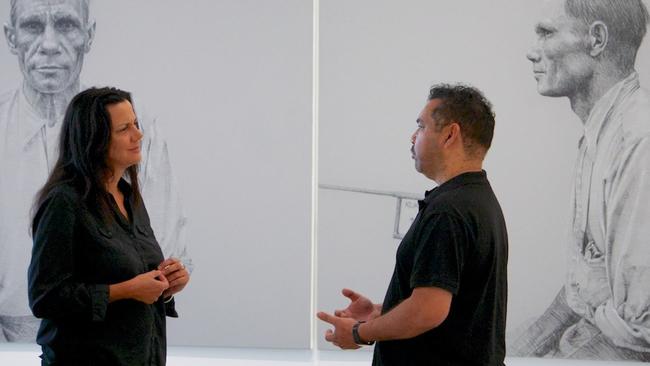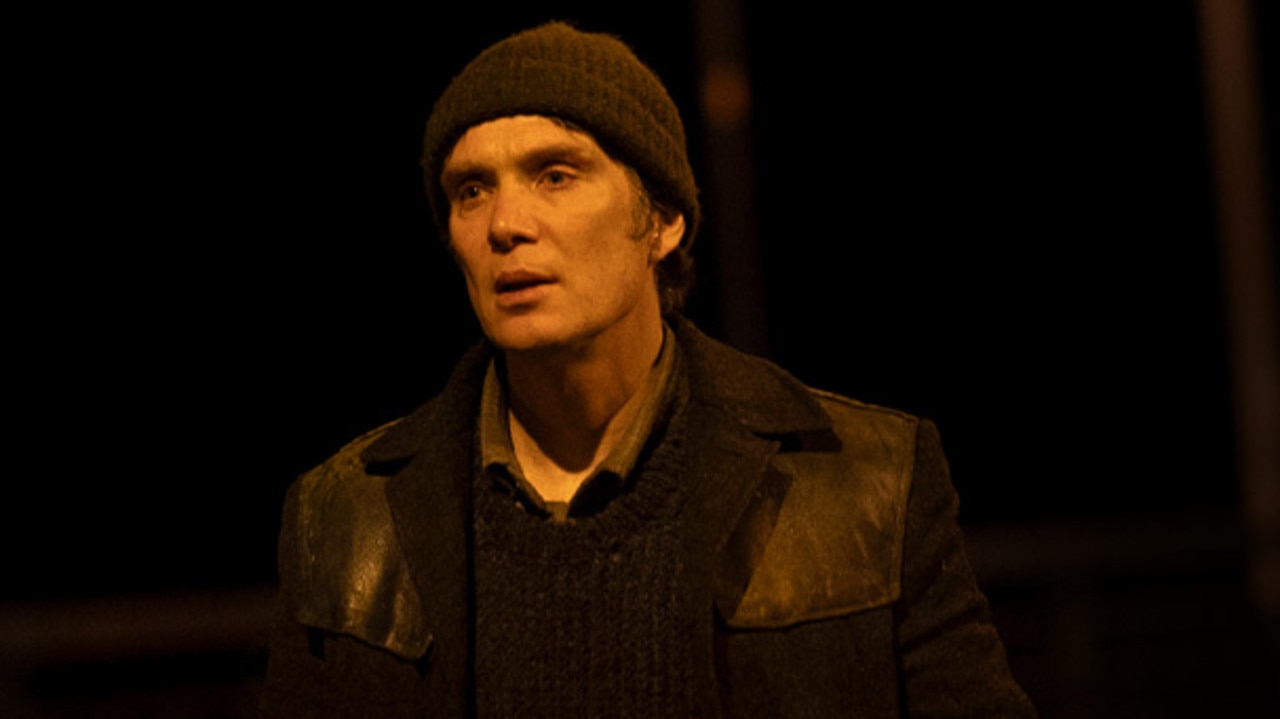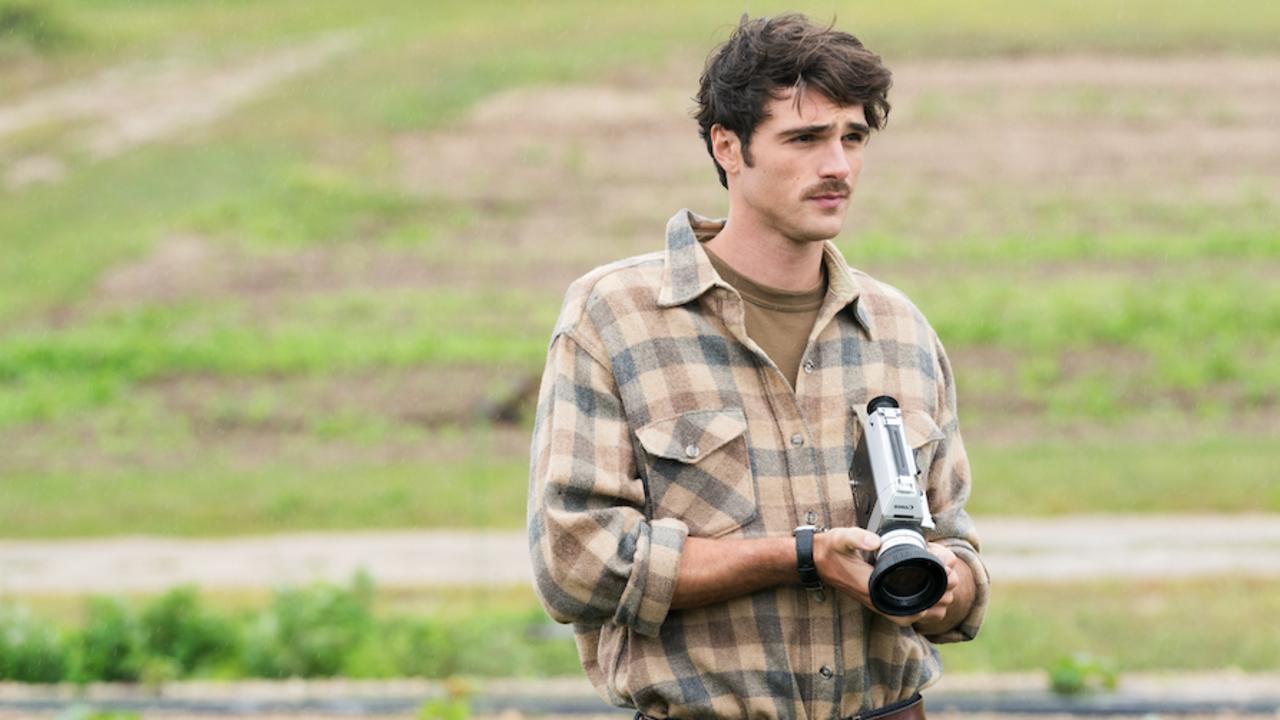‘Those beautiful things’ on Art + Soul
HETTI Perkins returns with the second series of the excellent Art + Soul.

IT all started with a perplexed film producer, who, like so many of us, wanted her simple curiosity satisfied about what the dots characterising Aboriginal art meant. Out of this inquisitiveness, the first three- part series of Art + Soul was created, a series exploring the largest art movement this country had produced, one that’s still bewildering and just a little incomprehensible to most of us.
Then, most art is. Hibiscus Films’ Bridget Ikin (An Angel at My Table, My Year Without Sex) was the producer and the series was written and presented by the charming and erudite Hetti Perkins, then senior curator of Aboriginal and Torres Strait Islander art at the Art Gallery of NSW.
An Eastern Arrernte and Kalkadoon desert woman, she’s the daughter of political activist Charles Perkins and sister of filmmaker Rachel Perkins (First Australians and Bran Nue Day). The director and cinematographer was Warwick Thornton, whose debut feature, Samson & Delilah, won the Camera d’Or at Cannes in 2009. Thornton’s handheld camera intimately followed Perkins as she zigzagged across the country to explore what he called “those beautiful things” through which to tell her story. To find the art and its creators they travelled between 10 remote-area communities from Alice Springs, Central Australia and the Kimberley to the far reaches of East Arnhem Land, as well as to rural and city studios.
It was engrossing television, heartbreaking at times, always illuminating and often inspiring, as stories of courage, resilience and tragedy illuminated the indigenous experience. Some of the stories — like many of the artists Perkins visited — were funny, mischievous, sly and beguiling. The series was especially fascinating for those of us who know so little of Aboriginal life and the art that so vividly represents it, and were just as confounded as Perkins’s producer about what those dots mean. While we could see Aboriginal art in galleries or books most of us had little idea of where it came from, or knew anything about who painted it and what they looked like and believed.
Perkins pithily explained that the art that so confuses us represents “encrypted title deeds to country, written in a poetic, visual language”, and presents not a regional or chronological history but an intimate journey of ideas, subtly revealing the way the past and present, tradition and modernity, converge artistically through a political prism. And she returns this week with series two, which goes a little deeper into the work and is more political, thankfully without ever preaching or shouting.
There’s more focus on living artists, and fewer of them, and, in three parts, the series includes many city-based practitioners embedded in contemporary city life, who draw on their pasts and family to tell their stories, but reshape and rework them for a modern audience.
Stephen McGregor directs this time; Thornton is now also an emerging conceptual artist who appears in episode two.
McGregor gave us the remarkable Croker Island Exodus two years ago, the compelling, often quirkily funny story of the epic journey of 95 Aboriginal children and their three missionary carers as the Japanese threatened to invade Australia in 1941. It was a lovely, quite captivating marriage of the art of storytelling and the practice of journalism that makes drama out of the observable world of real people, real places and real events. And McGregor brings a similar sense of unfolding narrative to Perkins’s script, fitting “the pieces of the jigsaw together” as Perkins calls it, as she again leads a small camera crew around the country for 12 weeks.
Language was sometimes a problem as for many of the artists featured in the series English was their seventh language. “It was important to allow companionable silence,” Perkins says in the production notes. “Not to always feel you had to interrogate people.” And the style is somehow encompassing, subjective in tone, sometimes pleasingly elegiac, drawing you right in. “I wanted to give the audience time to breathe,” says McGregor. “That’s about letting moments sit. Getting that right is instinctual. If it’s all ‘blah blah blah’ you get lost. An audience wants to exhale with the landscape, the art, the music.”
In discussion with cinematographer Murray Lui, he decided, like Thornton, to keep the interviews informal, shooting had-held, over-the-shoulder loose, but, unlike Thornton’s treatment, there are no travelling shots; the formality come through the art itself, Lui anchoring things down for the various works by using a tripod or drifting tracking shots.
The opening sequence has the power of a feature film, juxtaposing images of a red monumental outback Australia with black and white footage of Perkins’s articulate and political active father, set against a hard, country soundtrack featuring Paul Kelly singing Little King. It’s a song about how Aboriginal people can feel an ill wind blowing no good, that change is happening, and that it’s going to mean bad news for them and their culture. It seems to suggest something of the bafflement so many feel about the way indigenous art has become the darling of the international art trade, despite so much of it having been made in isolation and filled with allusions to motifs we can never recognise or fully understand. And how its “merchandising” seems to be simply an expression meaning “white people get rich”, another word for carpet-bagging and exploitation. In the sequence, Charlie Perkins speaks from the past for the present: “Some people ought to be brought up before the courts and virtually hung for what they’ve done to Aboriginal people.”
We then follow his daughter as she wanders thoughtfully through the recently opened wing of Canberra’s National Gallery of Australia where the art of the first Australians is honoured. The centrepiece is the Aboriginals memorial, a forest of 200 hollow log coffins by the artists of Ramingining, honouring the lives lost defending land since first contact in1788, silent sentinels to honour the fallen.
In voice-over narration, Perkins tells us that her father told her to use every opportunity to speak up for their people and that she regards art as their voice. He also told her, “We know we can’t live in the past, but the past lives in us”. Art, she says, is a commemoration of the history of her people, “but is also a celebration of our survival and it is the legacy which we will pass onto our children.”
She leads us into the exhibition to a display of Sydney artist Daniel Boyd’s work, his version of the traditional dot paintings, which incorporates photographs, including his family. He overlays dots, as a veil or prism, masking some of the image, raising questions about the destructive past actions of the church and about assimilation. “They are an eclectic mix of images that together form a cabinet of curiosities that bring to light the often gruesome colonial practice of collecting other cultures, even people, trophies of empire,” says Perkins.
The light installations of Sydney artist Jonathan Jones reflect the Aboriginal past too, and the way it simply can’t be erased from our cities, as much as civic authorities have consciously or more unobtrusively tried, and his massive, quite wonderful Star City Casino work, another stunning use of dots, celebrating the Eora people’s connection with water is something you’ll never walk past again without a long period of contemplation.
Perkins cements her role as not only an entertaining and scholarly presenter but also as a narrative journalist with a profound social conscience, her mission to remind us what it means to be human, breaking down the barriers of apathy and cynicism. She’s modest, deferential to the painters to whom she introduces us, and perplexed rather than outraged at the atrocities her artists speak about and which appear in their work. As in the first series, she’s a delight to watch. The fact she’s not a polished TV performer, and doesn’t even really try to be, adds authenticity to what she does. At times she seems genuinely overwhelmed with the power of the work she encounters in the same way she saw the politics of Aboriginal life unfolding as a young girl watching her father making his speeches.
Art + Soul, Tuesday, 8.30, ABC1


